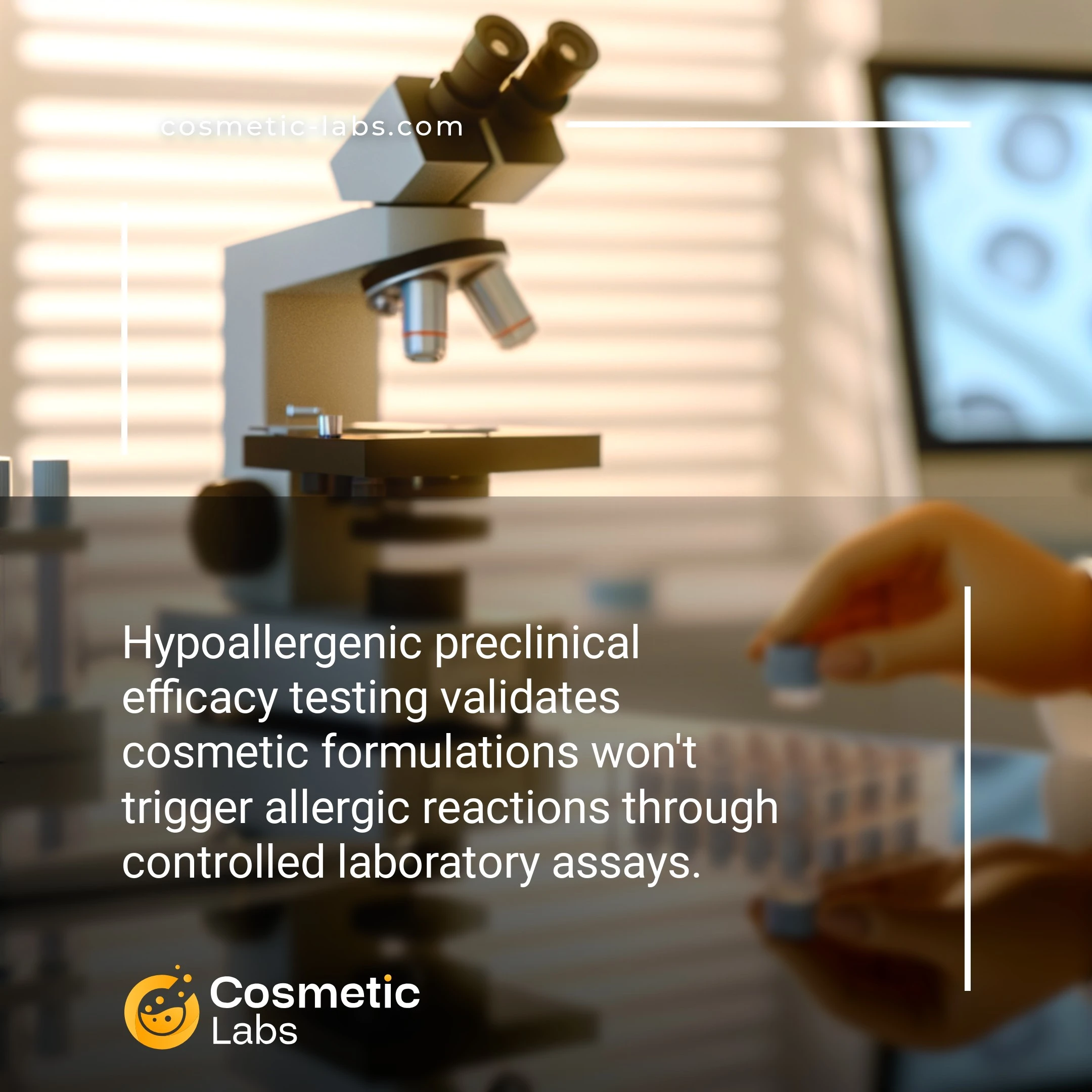Hypoallergenic Testing Services For Cosmetic Products

What is Lip care efficacy testing?
Hypoallergenic preclinical efficacy testing services evaluate cosmetic formulations for their ability to minimize allergic reactions before human trials begin. These lab-based assessments use in vitro assays and biomarker analysis to measure inflammatory responses, skin barrier function, and immune system activation patterns. What many brands don’t realize is that proper hypoallergenic testing can identify problematic ingredients at concentrations as low as 0.1%, potentially saving thousands in reformulation costs later.
Why do you need this service?
Beauty brands use hypoallergenic preclinical testing to validate sensitive skin formulations before market launch, reducing product recall risks and consumer complaints. Labs conduct patch testing protocols and irritation assessments that generate regulatory-compliant safety data for FDA submissions, helping companies secure faster approvals while building consumer trust through scientifically-backed hypoallergenic claims.
Who provides Lip care efficacy testing services?
All cosmetic labs providing Lip care efficacy testing services
There is no company providing these services at the moment.
Hypoallergenic Preclinical Efficacy Testing Services
Hypoallergenic preclinical efficacy testing validates your product’s gentle formulation before human trials begin. These specialized assessments complement broader skin immunity testing by focusing specifically on allergenicity potential and irritation response patterns.
In-Vitro Allergenicity Assessment Protocols
Labs run cell-based assays to evaluate your formulation’s potential to trigger allergic reactions. Keratinocyte activation tests measure inflammatory markers like IL-1α and IL-18 release when skin cells contact your ingredients. The DPRA (Direct Peptide Reactivity Assay) checks if your formulation binds to skin proteins that could initiate sensitization.
Testing protocols include:
- KeratinoSens™ assay for skin sensitization potential
- h-CLAT (human Cell Line Activation Test) for dendritic cell response
- MUSST (Myeloid U937 Skin Sensitization Test) for immune activation
Results help you reformulate before expensive human patch testing or identify which ingredients need concentration adjustments.
Irritation Threshold Determination
Reconstructed human epidermis models like EpiSkin™ and SkinEthic™ test your product’s irritation potential without animal testing. These 3D tissue models replicate human skin barrier function and inflammatory responses. Labs expose tissue samples to your formulation for specific timeframes, then measure cell viability and inflammatory mediator release.
Key measurements include:
- MTT viability assays at 24 and 48-hour intervals
- IL-1α release quantification
- Barrier function integrity assessment
This data supports your hypoallergenic claims with scientific evidence. Connect with experienced labs on our platform to discuss testing protocols that match your product category and target market requirements.
Practical Applications of Hypoallergenic Preclinical Efficacy Testing
Hypoallergenic preclinical efficacy testing applications drive product development decisions across sensitive skin formulations, regulatory submissions, and market positioning strategies.
Sensitive Skin Product Development
Cosmetic labs use hypoallergenic testing protocols to validate formulations for atopic dermatitis, rosacea, and contact dermatitis-prone consumers. Testing includes patch testing on reconstructed skin models, cytokine release assays, and barrier function measurements. Labs measure transepidermal water loss (TEWL), interleukin-1α levels, and histamine release to quantify irritation potential.
Results guide ingredient selection and concentration limits. Testing typically reduces reformulation cycles by 40-60% compared to traditional trial-and-error approaches. Labs deliver comprehensive irritation profiles within 14-21 days, enabling faster time-to-market for gentle skincare lines.
Regulatory Compliance and Claims Substantiation
Brands leverage hypoallergenic testing data for FDA cosmetic safety assessments and EU cosmetic regulation compliance. Labs perform human repeat insult patch testing (HRIPT), ocular irritation studies using EpiOcular models, and dermal absorption testing. Documentation includes detailed protocols, statistical analysis, and safety margins.
Testing supports “hypoallergenic,” “dermatologist-tested,” and “suitable for sensitive skin” claims. Proper documentation reduces regulatory review time by 30-45 days for new product registrations. Labs provide GLP-compliant reports that meet international safety standards.
| Testing Method | Timeline | Primary Application | Regulatory Use |
|---|---|---|---|
| HRIPT (Human Repeat Insult Patch Test) | 6-8 weeks | Sensitization assessment | FDA/EU submissions |
| EpiSkin irritation model | 3-5 days | Acute irritation screening | OECD guideline compliance |
| Cytokine release assay | 24-48 hours | Inflammatory response | Claims substantiation |
| Barrier function testing | 2-3 days | Skin compatibility | Product positioning |
Ready to validate your formulation’s hypoallergenic properties? Contact specialized cosmetic labs on our platform to discuss your specific testing requirements and timeline.
